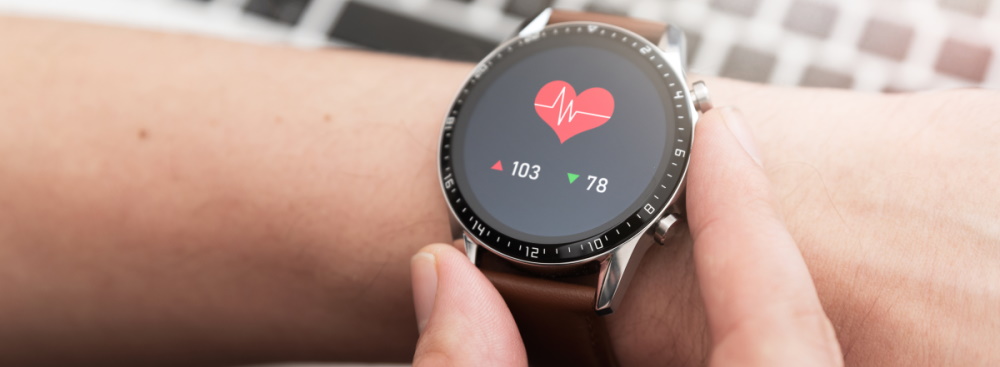The Revolutionary Evolution of Remote Patient Monitoring
Find out how RPM is helping redefine healthcare organizations and how far healthcare is in adopting Connected Care.
The past year reminded us how vital healthcare is and highlighted the importance of protecting healthcare services. The virus created the global need for the rapid shift from contact-based to virtual care supporting the patient in multiple situations. As the pandemic spread across the globe, remote patient monitoring (RPM) became the preferred solution -where possible- versus in-person monitoring. It meant safety for both patients and staff. Monitoring people with health issues from the elderly to people recovering from surgeries or with chronic diseases while remaining in their home environment is the safest option during a pandemic.
This decade will see a huge increase in RPM devices, at a growth rate of 12.5% annually. The trend is quite predictable considering the effects of the high cost of patient care and the enormous pressure on hospitals caused by COVID-19.
The key components of RPM
Remote patient monitoring (RPM) uses digital technologies to collect medical data from individuals in one location and electronically transmit that information securely to healthcare providers in a different place for assessment and recommendations. This type of service means the medical staff can continue tracking and monitoring a patient even when released from the hospital. Data shows that RPM significantly reduces the readmission rates and frees up hospital beds quicker for new patients.
Key components of RPM systems:
- a personal medical device for monitoring purpose
- a patient mobile/web app
- EHR system back-end
How does RPM transform healthcare?
Healthcare providers are already using more vital diagnostic devices for remote monitoring than ever before. They are used to track patients’ signs and symptoms from a distance, thereby decreasing the number of in-patients. We predict that RPM is here to stay as it benefits all healthcare stakeholders, from patients to care providers to insurers.
- A survey conducted by a wearable healthcare provider found that two-thirds of patients, 40 and older, would utilize a health monitoring device if it meant they could reduce the number of times they had to visit a doctor or hospital physically. (Healthtech Magazine)
- Another survey suggests that 88% is the percentage of healthcare providers that have invested in remote patient monitoring technologies to support high-risk, chronically ill patients at risk for hospital readmission. (Spyglass consulting)
- According to the American Hospital Association, many healthcare leaders 85% suggest that digital innovation is tied to their long-term strategies to improve care. (American Hospital Association)
- The global RPM market is on pace to reach $117.1 billion by 2025, compared to $23.2 billion in 2020 – more than a fivefold increase in just five years. (Forbes)
The benefits of Connecting Digital Health
There are many benefits for applying RPM, and they cover the interest of all healthcare stakeholders. According to Healthcare Magazine, here are five of the advantages:
- reduce readmissions by 38%
- reduce emergency room visits by 25%
- improve patient satisfaction by 25%
- cut costs of care by 17%
- improve medication compliance by 13%
Patients have a lot to gain from RPM. It lets people recover at home. It also helps patients better manage and understand their conditions. And it helps the chronically sick pick up their lives as best they can without the continuous interruptions of hospital visits. And, especially during the pandemic, patients and staff can reduce the risks by avoiding in-person contact. Hospitals and care providers are helped by a reduced number of visits to the ERs, giving them more time to focus on the critically ill. Reducing time in hospitals frees up beds for those patients who need it, and in case of staff shortages, RPM minimizes the pressure. As the investment in RPM helps to reduce the cost of care, healthcare insurance companies will also see the benefit of this new technology-based solution.
What is next in RPM technologies?
Remote Patient Monitoring is here to stay. According to Klas Research, organizations plan to grow in terms of total patients and the number of conditions covered. Technology and infrastructure everywhere are not as reliable as needed. And for an RPM solution to work efficiently and be effective, it needs to connect to the EMR or EPD. And to be accepted on a large scale, the digital experience needs to be humanized; it may be technology-enabled, but it is still a patient/care provider consult.
Find out more about: Intuitive apps that improve healthcare.
Taking the complexity out of technology
As a technology company and partner of many healthcare solution providers, Yonder believes in the power of technology. We recognize the challenges (infrastructure, adoption, incompatibility, business cases that need to be profitable, etc.) and the limitations (reliable internet, the evolution of available technologies, etc.). Still, to us, technology is the way forward. So, we investigate new technologies but only focus on those that can add value to our clients’ solutions and overall business results. Pragmatic innovation that carries our clients into the future. We have assisted healthcare solution providers worldwide in creating enterprise as well as mobile, web, and telemedicine applications.
Are you interested in finding out more about RPM solutions and the needed technology for your company? Would you like to know more about a lean and pragmatic approach to explore RPM for your solution?
Then get in touch with us! Click here to send an email.
Marius Campanu
Delivery Manager
STAY TUNED
Subscribe to our newsletter today and get regular updates on customer cases, blog posts, best practices and events.











